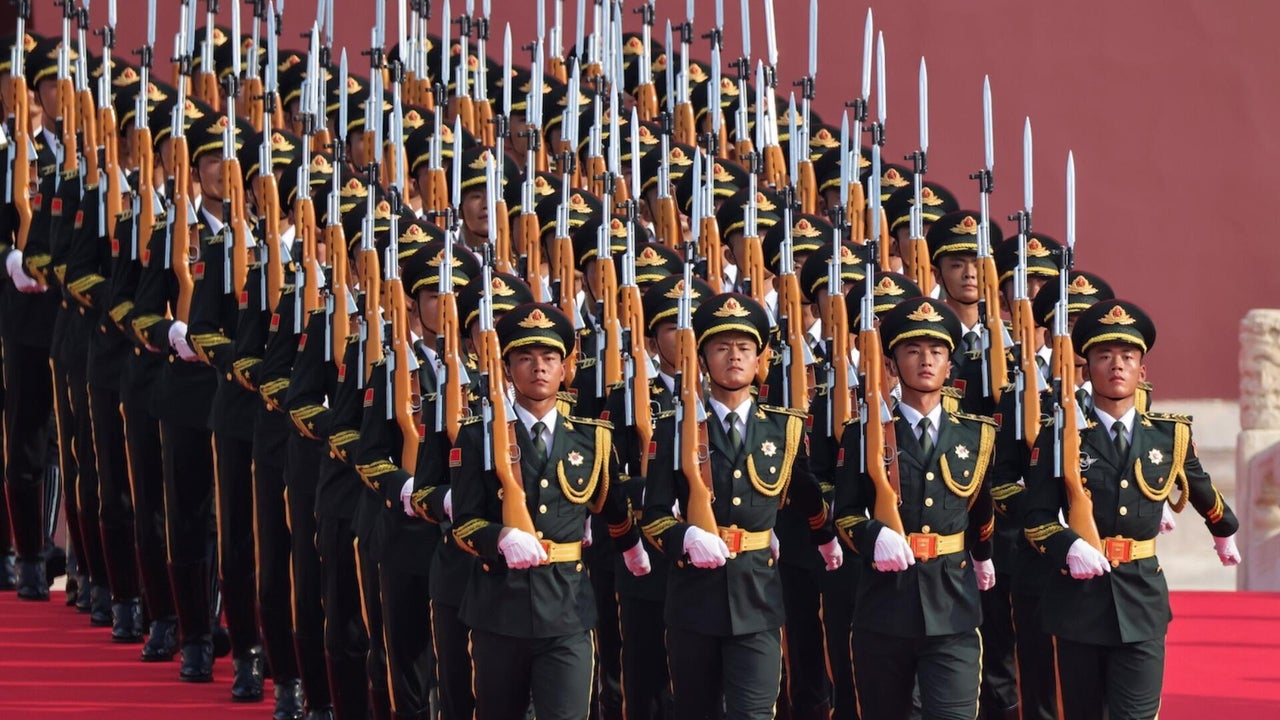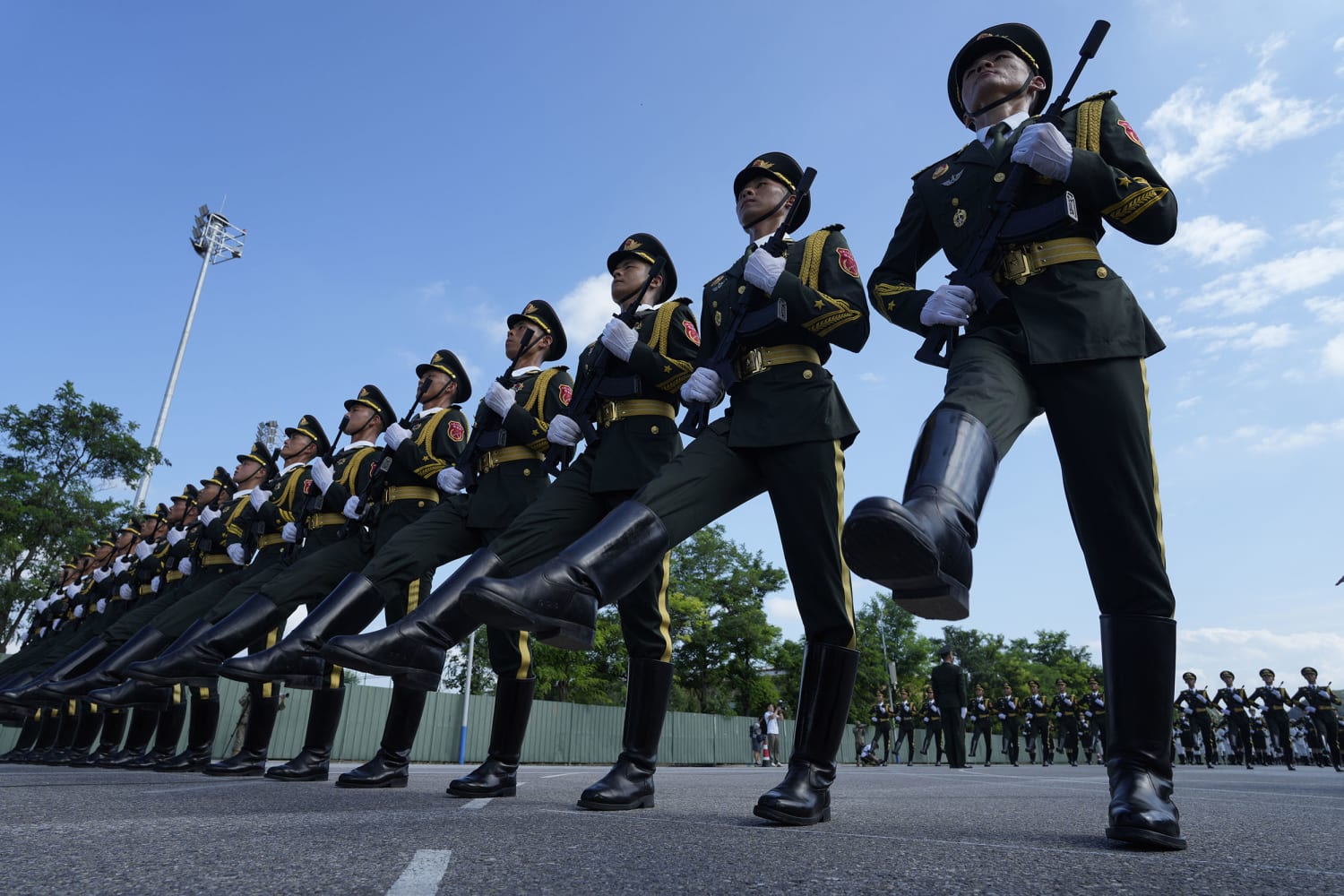
The recent military parade in Beijing, commemorating the 80th anniversary of the end of the Second World War, served as a potent, deliberately fearsome display of China’s accelerating transformation into a formidable military superpower. Far from a mere historical observance, the spectacle in Tiananmen Square was a stark declaration from Xi Jinping: a vision for a new world order, with China at its apex, backed by high-tech arms that, in many critical areas, appear to be pushing beyond the capabilities of traditional rivals. This grand exposition of forces – tens of thousands of troops, advanced tanks, armored vehicles, and an awe-inspiring array of missiles – resonated globally, signaling a profound shift in the landscape of modern warfare.
Military analyst Michael Clarke aptly summarized Beijing’s intent to Sky News, noting that “They want to advertise to the world that they’re doing old and new.” The parade showcased the sheer enormity of China’s conventional might while simultaneously unveiling a plethora of new, previously unseen weapons and equipment. This dual approach underscores a strategic ambition that merges traditional military strength with cutting-edge technological innovation, suggesting that the future of conflict, as defined by China, is already here. It challenges existing paradigms and forces a re-evaluation of global military balances, urging a closer look at what these developments truly mean for international security and the nature of future engagements.
The rapid pace of China’s military modernization, fueled by significant economic growth and a clear strategic vision, has spurred a global conversation about the implications of its “world-class” military aspirations. From its foundational doctrine to its organizational structure and advanced weaponry, the People’s Liberation Army (PLA) is undergoing a comprehensive overhaul, designed to enhance combat effectiveness and project power. This in-depth analysis delves into the core components of this transformation, examining how structural reforms, strategic assets, and pioneering technologies are reshaping China’s military posture and, by extension, the global geopolitical landscape.

1. **Restructured PLA Hierarchy: The Emergence of the ISF, ASF, and CSF**In a significant organizational overhaul in April 2024, the People’s Liberation Army (PLA) undertook a pivotal restructuring, creating the new Information Support Force (ISF) to enhance network information capabilities for the military. This reform disbanded the PLA’s Strategic Support Force (SSF), which had focused on space and information warfare. The ISF emerged as an upgraded version of the SSF’s former Information Communication Base (ICB), indicating a deepening specialization and elevated importance of communication and information systems.
Crucially, the SSF’s Aerospace Systems Department and the Network Systems Department were retained and redesignated as the Aerospace Force (ASF) and the Cyberspace Force (CSF), respectively. The ISF, along with the ASF and CSF, now report directly to China’s Central Military Commission (CMC). This direct line of command underscores the central importance placed on these forces in China’s overall defense strategy, granting them significant authority and resources.
With this comprehensive reform, the PLA’s structure now comprises four primary services—the Army, Navy, Air Force, and Rocket Force—and four distinct auxiliary arms: the ASF, CSF, ISF, and the Joint Logistics Support Force. While the SSF operated as a theater-grade organization, the newly formed ISF occupies a deputy theater-grade position. These four arms are positioned below the four services and the five theater commands, and this reorganization is expected to enable theater commands to access smoother and more efficient services, thereby enhancing joint operational capabilities and responsiveness.

2. **Advanced Cyberspace and Information Warfare Units: The New Frontier of Conflict**The strategic overhaul of the PLA hierarchy directly underpins China’s aggressive push into advanced cyberspace and information warfare, recognizing these as new and decisive frontiers of modern conflict. The establishment of dedicated units, such as the Cyberspace Force and the Information Support Force, highlights a profound shift towards “intelligent warfare,” where controlling and exploiting information networks is as crucial as traditional kinetic power. These units are integral to projecting influence and maintaining a strategic edge in an increasingly digital battlespace.
The Cyberspace Force, newly designated, stands as a critical component, charged with cybersecurity defense measures. The Xinhua state news agency reported its active participation in live-fire drills, signaling its readiness for operational engagement. This suggests China views cyber warfare not as theoretical, but as a domain requiring rigorous practical application and integration into broader military exercises, developing robust offensive and defensive capabilities.
Parallel to this, the Information Support Force, created in 2024, plays a vital role in building network information systems to bolster military combat readiness. Its mandate ensures the seamless flow of critical data and intelligence across diverse military operations, so all PLA branches can operate with synchronized and superior informational advantages. This focus on integrated network systems underscores China’s ambition to outmaneuver adversaries with foundational superiority in information processing and dissemination, central to modern command and control.
3. **China’s Nuclear Triad: A Strategic “Ace” on Display**The recent military parade offered an unprecedented glimpse into China’s strategic nuclear capabilities, as Beijing publicly unveiled its full nuclear triad for the first time. This deployment of air, land, and sea-based missiles rolling through Tiananmen Square marked a pivotal moment, signaling China’s mature status as a nuclear power and its commitment to safeguarding national sovereignty. This comprehensive display positions China among an elite group of nations known to possess a fully integrated nuclear triad, alongside the United States, Russia, and India, highlighting its expanded global strategic reach.
The land-based component was particularly notable, featuring the formidable DF-61 intercontinental missile, described as a huge ICBM carried on an eight-axle truck, and the new type DF-31 land-based intercontinental missile. The DF-61, representing the PLA Rocket Force’s first new ICBM since the DF-41 in 2019, signifies continuous advancements. These mobile platforms enhance survivability and deployment flexibility, complicating adversary targeting strategies and reinforcing China’s second-strike capability.
Complementing land-based systems, the parade also showcased the JL-1 air-based long-range missile, demonstrating China’s capability to deliver nuclear payloads from airborne platforms. The JL-3 submarine-launched intercontinental missile completed the triad, emphasizing China’s growing prowess in subsurface strategic assets. The ability to launch nuclear missiles from submarines significantly enhances the stealth and survivability of China’s nuclear arsenal, making it an incredibly resilient and credible deterrent.

4. **Hypersonic Missile Arsenal: Reshaping Regional Power Dynamics**The parade’s display of China’s hypersonic missile arsenal offered a stark illustration of Beijing’s investment in advanced capabilities designed to project power and deter adversaries, particularly in maritime theaters. Among the most striking were the YJ-17, YJ-19, and YJ-20 hypersonic anti-ship missiles. These formidable weapons, which China has previously tested against mockups of US aircraft carriers, are explicitly “designed to frighten the United States,” as military analyst Michael Clarke noted, with a clear reference to the Pacific Ocean.
The strategic significance of these anti-ship missiles cannot be overstated. Their hypersonic speed and maneuverability make them exceedingly difficult to detect and intercept, posing a substantial threat to naval assets. By demonstrating these capabilities, China aims to establish a credible anti-access/area-denial (A2/AD) zone, challenging the operational freedom of rival navies in critical maritime regions. This sends a direct message to Washington regarding the potential vulnerabilities of its carrier strike groups, which form the backbone of its naval power projection.
Beyond anti-ship variants, the parade also highlighted missiles equipped with Hypersonic Glide Vehicles (HGVs). These advanced systems carry warheads at speeds exceeding five times the speed of sound, combined with irregular flight trajectories. This combination of extreme velocity and unpredictable movement presents a formidable challenge to existing missile defense systems, which are typically designed to intercept ballistic missiles with more predictable flight paths. HGVs can “vex missile defenses,” making them a potent tool for penetrating sophisticated layered defenses.

5. **Fifth-Generation Stealth Fighter Jets: Challenging Air Superiority**In a clear demonstration of its advancements in aerial warfare, Beijing showcased its indigenous fifth-generation fighter jet technology, with the Chengdu J-20 and Shenyang J-35A soaring above the parade. These advanced aircraft represent a cornerstone of China’s ambition to rival and potentially surpass the air forces of leading global powers. Both fighter jets boast stealth capabilities, a critical attribute for modern air combat, explicitly designed to challenge the dominance of the US Air Force’s F-35 jet and reshape the balance of air power.
China’s development of two operational fifth-generation fighter jets places it in an exclusive global club. The context highlights that China now possesses two of the five known fifth-generation fighter jets operating worldwide, alongside the American F-35 (also operated by the UK and other allies) and F-22, as well as the Russian Su-57. This achievement underscores Beijing’s rapid progress in advanced aviation technology, indicating a concerted effort to indigenously develop and deploy sophisticated platforms that reduce reliance on foreign suppliers.
The J-20 and J-35A are not merely impressive technological feats; they embody China’s strategic intent to achieve air superiority in any potential conflict scenario. Their stealth features, combined with advanced avionics and weapons systems, allow them to operate effectively in contested airspace, conduct precision strikes, and engage in sophisticated aerial maneuvers. The operational deployment of these jets signals a qualitative improvement in the PLA Air Force, enabling it to project power more effectively and challenge rival air forces that have historically held a technological edge.

6. **Advanced Unmanned Ground Systems: “Robot Wolves” and AI-Powered Q-UGVs**The parade provided compelling evidence of the shifting nature of modern warfare, with China prominently displaying a number of its unmanned weapon systems, notably including the so-called ‘robot wolves’. These ground-based autonomous platforms represent a tangible step towards a future battlefield where human-robot collaboration, or even autonomous decision-making, becomes increasingly common. The images of ‘robot wolves’ carried on vehicles underscore a commitment to developing diverse unmanned capabilities that augment human soldiers and perform dangerous missions.
Beyond the enigmatic ‘robot wolves,’ the formations also featured other impressive ground drones. These units are versatile, designed for a range of combat and support functions. Some are armed with machine guns for direct engagement, providing lethal autonomous firepower. Others are configured for mine-clearing, reducing risks to human personnel in hazardous environments, or for logistics, streamlining the delivery of supplies in complex terrains. This diverse application illustrates China’s strategic intent to integrate unmanned ground systems across the full spectrum of military operations.
The rapid advancement and deployment of these systems by China stand in stark contrast to the development pace observed in other leading military powers. While the U.S. Army sent an armed “robot dog” (Q-UGV) for testing in October 2024, China had already demonstrated similar AI-powered targeting technology at their Golden Dragon joint military drills in Cambodia months earlier. This timeline suggests that Beijing is not just conceptualizing but actively operationalizing advanced AI-powered combat systems on the ground.




